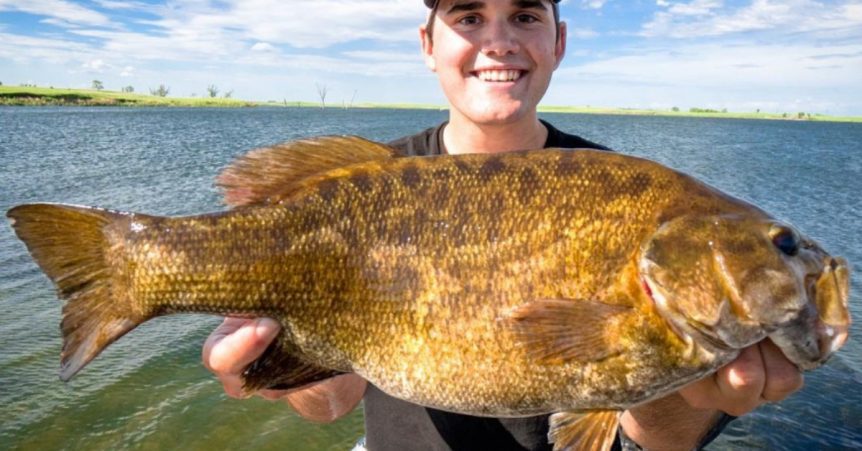3 Tips For Fishing Rocky Bottom Bass
Bass really liken to rock to find warmer water during the winter and in early spring. When the sun is shining, a rocky bottom absorbs the heat from the sun’s rays and warms the water above. The rocks continue to keep the water a few degrees warmer even on cloudy days so bass flock to these natural heaters. As the rocks continue to warm the water, crayfish will leave their deep-water haunts for the warmth of the rocky areas. So the rocks become ideal hangouts for bass by providing the fish with warmth and forage.
Try these three tips to catch bass on the rocks this winter and early spring.
Hair Jigs On The Rocks

Even though a warm spell heats up rocky banks, bass are still lethargic and trying to shrug off their wintertime blues. When proven wintertime tactics such as jerking a suspending stickbait or casting a football jig to bluffs and channel drops fail to produce in clear water, then target 45-degree rocky banks and throw a bucktail hair jig.
If there are a lot of dying shad present in the area try a white or gray jig. If there are not a lot of shad you should throw a brown jig. The best sizes for working the rocks are a 1/4-ounce jig and a 5/16-ounce model for deeper fish.
The jig will trigger bites without a trailer, but you might consider adding a plastic grub or chunk to increase the lure’s action and buoyancy. Match the white or gray jig with a smoke or salt-and-pepper trailer and use green pumpkin, brown or black trailers for the brown jig.
Position your boat over depths of 25 to 30 feet, cast your jig towards the shore and let it fall to the bottom. Then reel the jig along at a very slow and steady speed. Keep your rod tip pointed downward throughout your retrieve to make sure the jig stays near the bottom. Make sure the jig kicks the bottom as much as possible. The key to this retrieve is to swim the jig off the bottom to prevent it from hanging up but keep it ticking the rocks, which produces just enough erratic movement to trigger reaction strikes from bottom-hugging bass.
Shakey Head Craws Crush Rocky Bottom Bass

A finesse worm attached to a shaky head jig will catch some bass on the rocks when the water is cold, but a shaky head craw best imitates the forage bass are eating at this time of year. Match your shaky head jig with a 3-inch plastic craw for the best results. The most productive colors for a shaky head craw are green pumpkin, brown and watermelon.
A ballhead jig tends to hang up more in the rocks, so match your plastic craw with a pointed shaky head jig. Try a 1/8- or 1/4-ounce jighead for fishing in the shallower rocks, but switch to a 3/8-ounce model if the bass are deeper than 15 feet in gin clear water or if heavy current is present.
The retrieve for a shakey head craw differs slightly from a shaky head worm presentation. Rather than employing the constant shaking retrieve that works best for the worm, try a hop-and-drop retrieve for the shaky head craw. For active bass you can pop your rod to make the craw jump off the rocks, but if the fish are sluggish you need to slowly lift your rod so the craw gradually rises from the rocks.
Fishing Rocky Bottoms With A Spinnerbait

The shallowest bass in winter and early spring can be found in rocky areas where the water is murky. The rocks and murky water both absorb the heat of the sun’s rays to create the warmest water you will find in your favorite bass fishery.
A jig is a good choice for throwing to the rocks in murky water, but you should consider throwing a spinnerbait along the rocky banks if you see balls of shad on your depthfinder. Shad will move to the warmth of the rocks on sunny days and the bass will follow the baitfish to the shallows.
I prefer throwing a 1/2- or 3/4-ounce spinnerbait with a chartreuse skirt and a large (number 6 or 7) Colorado blade to the rocks during the winter. The blade bait shines in this situation because it generates flash and vibration making it easier for bass to hone in on the lure in the dirty water.
Bass will be as shallow as 3 to 4 feet basking in the warmth of the rocks, so I position my boat in about 8 feet of water. I cast parallel to the bank, which allows me to keep my spinnerbait in the strike zone throughout most of my retrieve. Slowly rolling the spinnerbait so the lure ticks the rocks is the key to triggering strikes.


